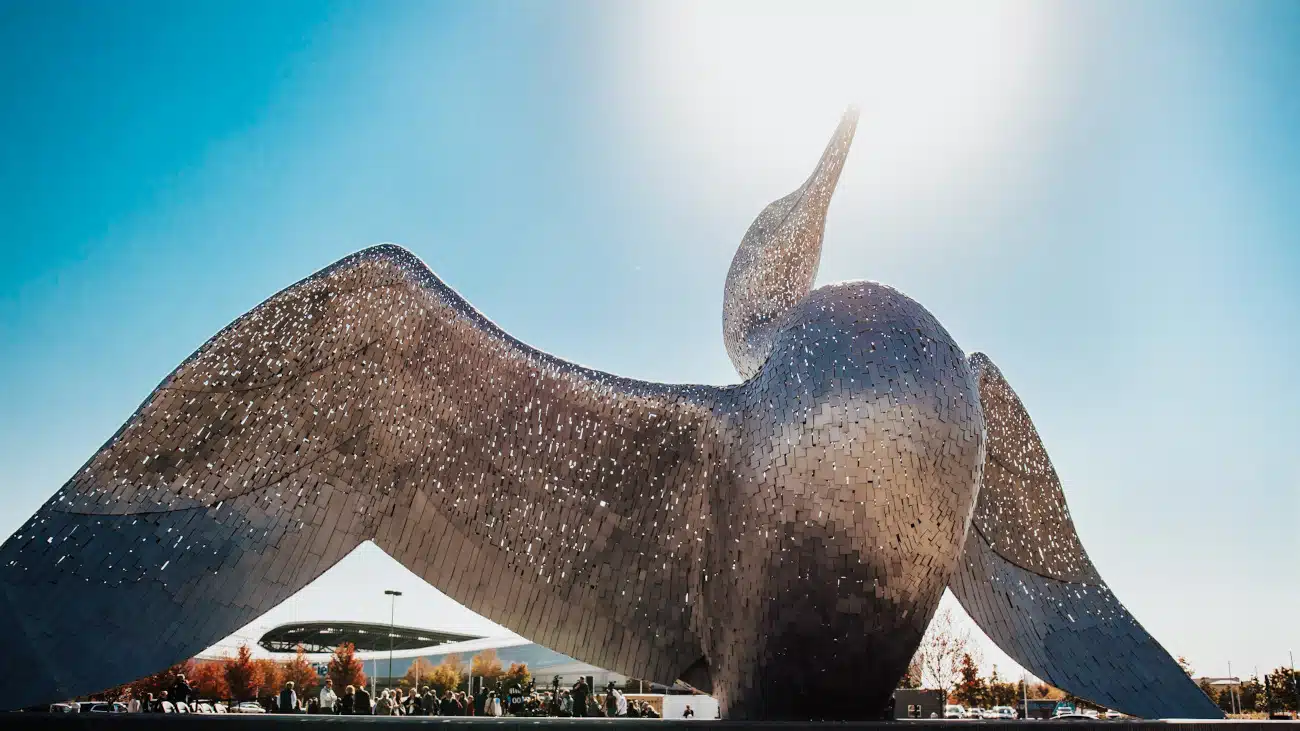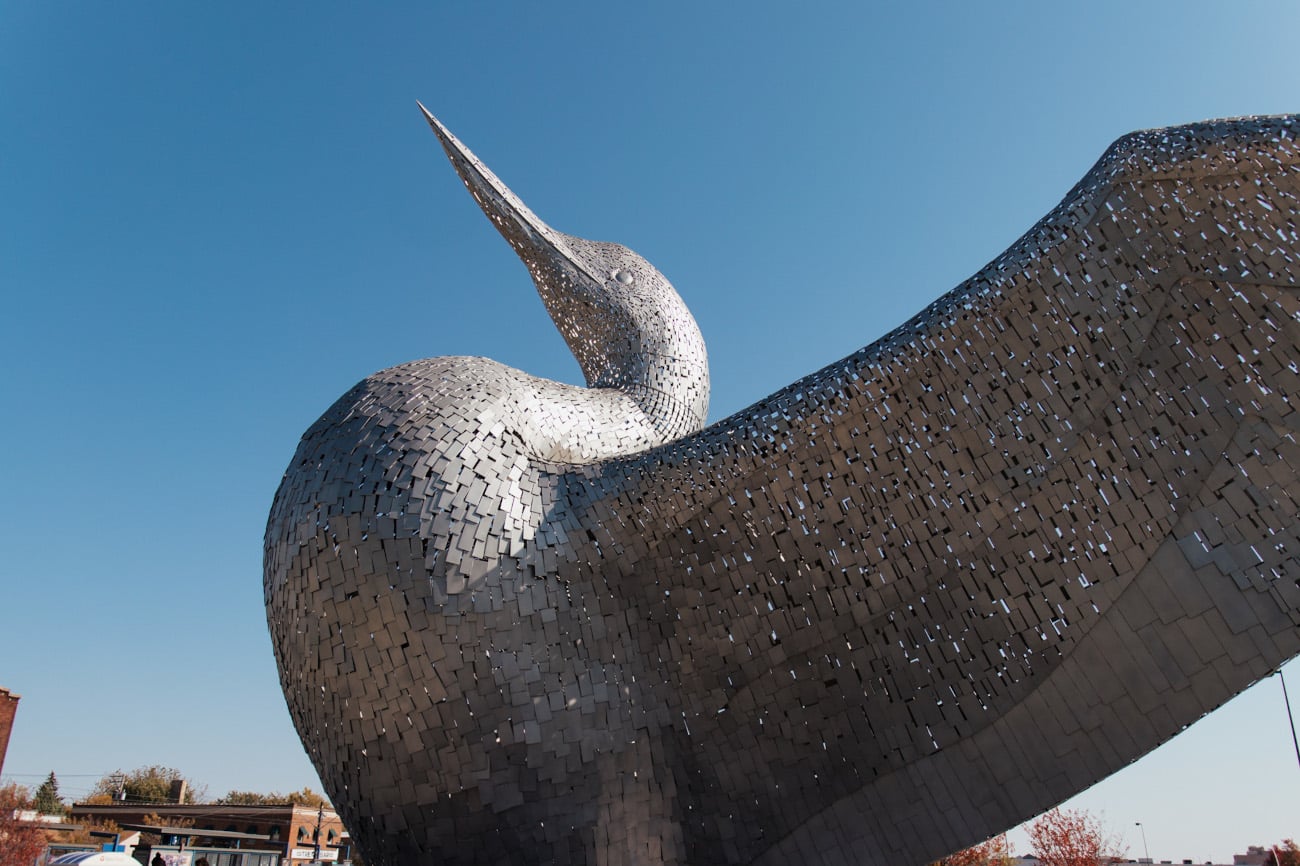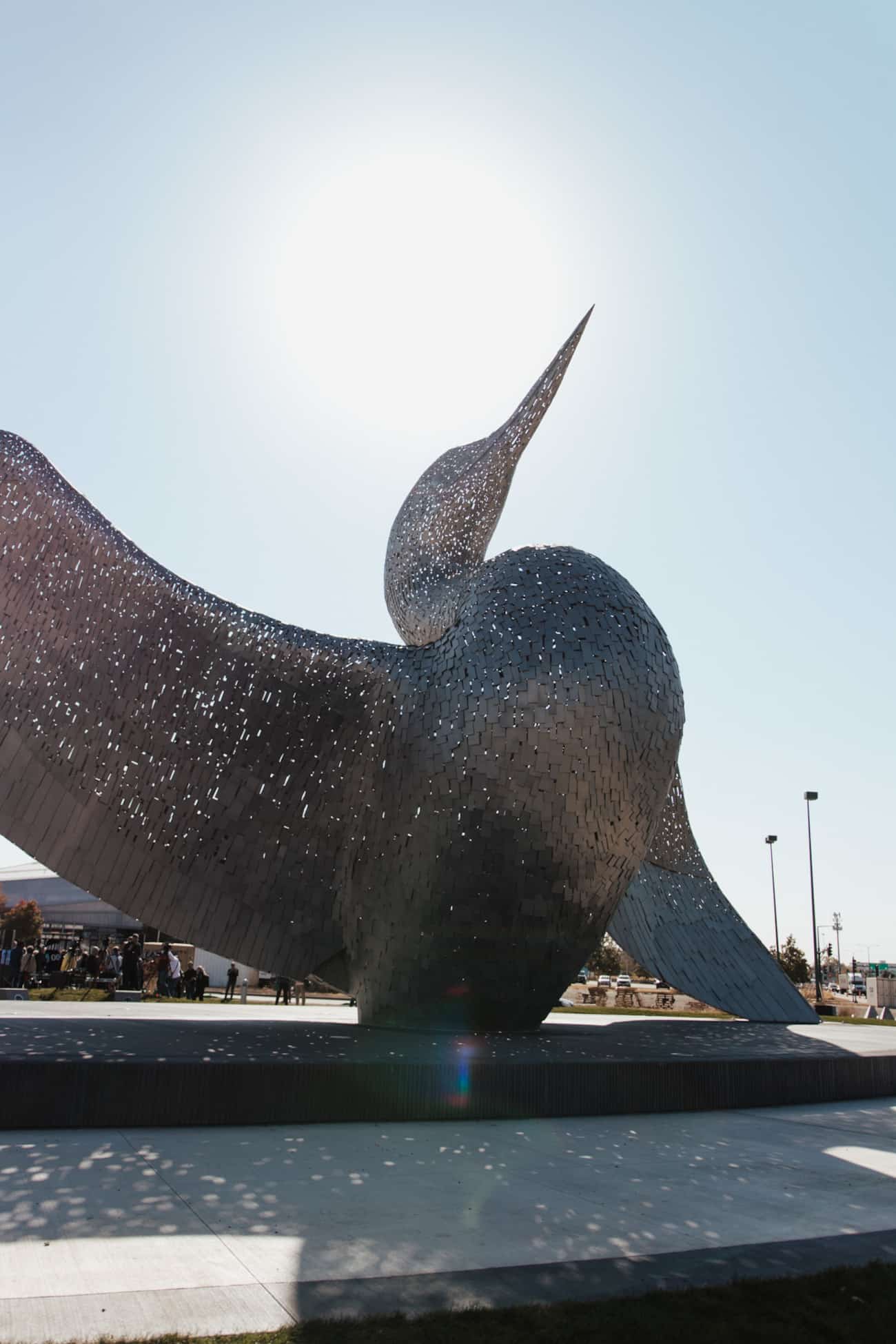
Photo: Visit Saint Paul, Hunter Meyer
Loons are a symbol of Minnesota’s vast wilderness—a fact that earned them the title of state bird in 1961. That’s why, when artist Andy Scott was approached to design a sculpture for the city of Saint Paul, he settled on this creature. But unlike the “Land of 10,000 Lakes,” loons aren’t native to Scott’s home country of Scotland or to California, where he now lives. And so, this work, titled The Calling, became a chance for the artist to dive into the lore surrounding this bird.
“One of the lovely aspects of projects like this is that it allows me the opportunity to research the subject matter, in this case, these magnificent water birds, and learn more about them,” he tells My Modern Met.
Scott had a few considerations in mind when settling on the final design. “First of all, it had to look good and engage with people,” Scott says. “I believe too much public art is esoteric and self-referential and I aim to make work that is accessible for all. So a magnificent bird, abstracted just enough to give a Deco-inspired grandeur to the location, seemed right. It had to be structurally stable and cost-effective. It had to fit the location physically and aesthetically. It had to require minimum maintenance.”
However, one thing was certain from the beginning—it would be made of his ever-reliable stainless steel, a material the artist likes for its durability and aesthetic finish.
Bringing The Calling to life wasn’t an easy task. While the design stage was pretty straightforward, translating it into a massive public artwork was more complicated.
“It was tremendously hard physical work involving a team of a dozen welders,” Scott says. “It was tricky to keep the aesthetic design on track with so many guys working across its vast form. Also, of course, we had to be very mindful of the structural engineering aspects to ensure its structural stability.”
The artist shares that the sculpture had to be freighted in over sixty sections from LA to the site in Minnesota on a convoy of twelve 55-foot semi-trailers. “It all demanded an intense degree of project management—an aspect of public art that is often overlooked.”
The name, which holds several meanings and layers, was also picked by Scott out of a list of 30 options. “The sculpture can be thought of as calling out with its distinctive whooping song, or it can be seen as calling out to the people of the Twin Cities to come to the stadium and its parklands and amenities,” the sculptor says. “Also, to have a calling in life means to have a deeper aspiration or purpose, and I liked that resonance with the city of Saint Paul, a rallying call to bring people together.”
Ultimately, Scott hopes viewers stop to take in the beauty of the loon and think about the relationship between humans and nature in today’s hectic world. “One can pontificate endlessly about the philosophical value of public art, but at the end of the day, I simply hope it elevates the everyday experience of the people of the Twin Cities,” Scott concludes. “That they might pause for a moment as they go about their busy day and think ‘wow, how lovely,’ they might spend time in its ever-changing shadow and marvel at the complexity of its skin plates and how the light shines off and through it.
I hope in time it becomes symbolic for the regeneration of that particular part of Saint Paul and that people are proud of it.”
For those wishing to view the magnificent sculpture in person, The Calling is on view in St. Paul outside of Allianz Field.
Artist Andy Scott was commissioned to create a towering loon sculpture for the city of Saint Paul.

Photo: Visit Saint Paul, Hunter Meyer
The Calling became a chance for the artist to truly dive in the lore surrounding this bird.

Photo: Visit Saint Paul, Hunter Meyer
The sculpture had to be freighted in over sixty sections from LA to the site in Minnesota on a convoy of twelve 55-foot semi-trailers.

Photo: Visit Saint Paul, Hunter Meyer
Ultimately, Scott hopes viewers stop to take in the beauty of the loon and think about the relationship between humans and nature in today’s hectic world.

Photo: Visit Saint Paul, Hunter Meyer
“I hope in time it becomes symbolic for the regeneration of that particular part of Saint Paul and that people are proud of it.”

Photo: Visit Saint Paul, Hunter Meyer
